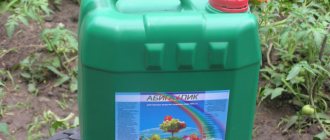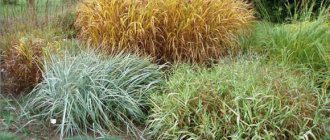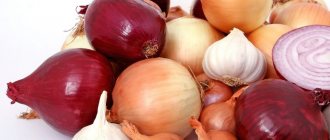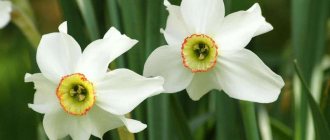Since ancient times, a fairly close connection between man and the plant world has been established. There are some species that people plant themselves, care for the seedlings, and then harvest. But in nature there are species that develop regardless of human activity. Cultivated plants, the names of which will be given below, have a special meaning for people. What are the species included in this category? More about this, as well as about which plants are considered cultivated, later in the article.
general information
Groups of cultivated plants, the list of which will be given below, are grown by humans to obtain feed for farm animals, food products, industrial, medicinal and other raw materials and for other purposes. In accordance with the eighth edition of the International Code of Nomenclature, three categories are recognized today into which the representatives of the flora under consideration are divided. These include, in particular, species, group and grex (for orchids). They are all obtained from wild varieties. In this case, selection, hybridization or genetic engineering methods were used. When searching for wild varieties for breeding cultivated plants and their subsequent use, the doctrine of the centers of origin of agricultural crops was formed. Thus, Vavilov, summarizing the available knowledge, identified 7 main centers. It must be said that groups of cultivated plants, unlike wild varieties, do not have natural distribution zones (areas).
Cultivated and wild plants
All plants that can be found on our planet are divided into two groups:
- Wild - herbs, shrubs, and trees that do not require special care. They can grow anywhere, depending on where the seed from which the plant grew in the future fell.
- Cultivated plants are plants that people grow and that they systematically care for. They grow in gardens, squares, garden plots, parks, and vegetable gardens.
All plants on earth have much in common: structure, nutritional habits, carbon dioxide supply and air production. However, as a result of our life activity, plants have received many differences, and this relates, first of all, to the methods of their cultivation.
Wild plants can grow well without human influence. To do this, they use the resources that surround them. And even if the growing conditions are completely non-ideal, plants can adapt to them. It is precisely because they grow in nature that they are called wild.
Cultivated plants. Examples. Classification
There are the following groups of cultivated plants:
- Decorative (rose).
- Cereals and cereals (eg wheat, corn, rice).
- Legumes (soybeans, beans, etc.).
- Sugar-bearing fruits (sugar beets).
- Starchy foods (potatoes, sweet potatoes).
- Fibrous.
- Oilseeds (sunflower).
- Fruits (apples, pears, pineapples).
- Vegetables (dill, cucumbers, tomatoes).
- Melons (melons, watermelons).
- Stimulants (poppy seeds, coffee, tea).
Classification
- 1. Cereals. They are also called cereals
. They are very important for humans, as they constitute their main diet. In addition, grains are used as animal feed and are also used in production. In general, grains are very important. This group includes plants such as wheat, rice, barley, oats, quinoa, corn, buckwheat, rye, millet and many others. - 2. Vegetables are also very important for people, since they are included in our diet in fairly large quantities, and are also suppliers of vitamins, microelements, macroelements and other useful substances. The most common vegetable plants: potatoes, Jerusalem artichoke, zucchini, carrots, cabbage, beets, turnips, tomatoes, cucumbers, peppers, eggplant, radishes, garlic, onions.
- 3. Fruit crops are real storehouses of useful substances. Many fruiting plant species are leaders in the list of the most useful plants in the world. It is difficult to imagine where people would get the nutrients they need if fruit plants did not exist. The most famous among them are: apple tree, pear tree, orange, tangerine, lemon, grapefruit, kiwi, pineapple, apricot, peach, banana, melon, mango, persimmon, grapes, cherry, raspberry, strawberry and many other plants.
All remaining crops can be divided into:
- — Legumes
(beans, peas, soybeans). - — Oilseeds
(rapeseed, sunflower, European olive). - — Melons
(melon, pumpkin, watermelon). - — Stimulating
(coffee tree, cocoa, ginseng). - — Fibrous
(linen, cotton). - — Sugar-bearing foods
(sugar beets, melon, watermelon). - — Starchy foods
(potatoes, corn).
Decorative crops stand apart from everyone else
. Ornamental plants are those that are grown to decorate residential premises, parks, gardens, squares, etc. As a rule, they are grown only for the sake of beauty, but despite this, they can bring considerable benefits. Which they do with success. Plants produce oxygen and also purify the air. But, in addition to this, they also have other useful qualities. Examples of ornamental plants are: rose, cactus, asparagus, violet, begonia, aloe and others.
Description
Groups of cultivated plants are defined according to various characteristics. Classification according to the economic purpose of a particular variety is quite widely used. Thus, there are groups of medicinal, melliferous, dyeing, spinning, fodder, food, technical and other cultivated plants. A variation of this classification (less convenient and, therefore, rarely used) can be a division in accordance with the substances present in them. In this case, they distinguish, for example, alkaloid-containing, protein-containing, fatty-oil and others. A mixed classification is also often used: along with food, medicinal, and fodder, oilseeds, fibrous, spicy and aromatic groups of cultivated plants are also distinguished. However, the most logical and fully developed system is considered to be classification in accordance with the industry principle.
Cultivated trees
Tree crops are valued by humans for the taste and usefulness of their fruits and the decorative appearance of their crowns. To domesticate wild species of vegetation, scientists use selection, hybridization and genetic engineering. The names of trees are folk, Latin and generally accepted. Deciduous and coniferous woody plants are most widespread in Russia.
Deciduous trees are used in landscape design. Plants differ in size, crown structure, color, shape of leaves and flowers. The calling card of the species is the birch tree. The tree has many varieties, but to decorate park and garden areas, weeping birch is most often used, which grows up to 9 m in height. A trunk with snow-white bark, hanging branches and yellowish catkins are the distinctive features of the species.
White or silver poplar, which grows up to 10 m in height, is widely used in decorating city streets, garden and park areas and adjacent areas. The large-leaved species is characterized by variegated colors, and the pyramidal black species has a narrow, columnar-shaped crown.
A number of varieties have maple. Ash-leaved, with a white edge, grows up to 5 m, and the height of holly reaches 6 m, while the leaves of the tree are purple. Alder grows quickly and is used to form a hedge in a wetland. The height of the tree reaches 10-12 m, and the crown takes on a conical shape.
There are 600 varieties of coniferous trees in nature, the value of most lies in their decorative qualities or the beneficial properties of the fruits of certain species - nuts. Evergreens have long been cultivated and are planted in garden plots and park areas. Mountain pine reaches a height of 10 m, and in its natural habitat - 2 times higher. A crop that blooms and bears fruit from 10 years of age or earlier is used in landscape design. The beneficial qualities of coniferous trees are used for health purposes; medical institutions are often built in pine forests.
Cedar pine, or Siberian cedar, is valued for its decorative properties and the healing properties of its nuts. Large trees are planted in large areas, where they grow and bear fruit for 30-40 years. The value of spruce lies in its decorative appearance and strong wood. The culture has up to 50 varieties, but not all of them are suitable for landscaping. A special role in decorating the territory is given to blue spruce, which is a rare species.
Division according to branches of agriculture
Experts distinguish groups of cultivated plants according to the type of agricultural activity: fruit growing, vegetable growing and field cultivation. Accordingly, there are fruit, vegetable and field varieties. The latter, in turn, are divided into root crops (radish, carrots, beets), leaf crops (lettuce, spinach, cabbage), fruit crops (cucumber, tomato), stem crops (asparagus, kohlrabi), and bulbous crops (garlic, onion). In many cases, flavoring (spicy-aromatic) cultivated plants (parsley, dill) are considered as a special subgroup. Tubers are varieties with edible tubers. Staple foods include potatoes (in Europe), cassava and yams (in Africa).
Cultivated plants photos with names and descriptions
Nov 15 • Uncategorized • 252 Views • No comments on the entry Cultivated plants photos with names and descriptions
Contents
Cultivated plants (agricultural crops)
- plants grown by humans to obtain food products, agricultural feed, medicines, industrial and other raw materials and other purposes.
According to the eighth edition of the International Code of Nomenclature for Cultivated Plants, three categories of cultivated plants are currently recognized: variety, grex (Orchidaceae only) and group [1].
Cultivated plants are obtained from wild ones by hybridization, selection or genetic engineering. In the process of searching for wild plants to transform them into cultivated plants and use them, the doctrine of the centers of origin of cultivated plants arose. In 1926-1939, N.I. Vavilov summarized the accumulated knowledge and identified seven main centers of origin of cultivated plants. Unlike ornamental species, cultivated plants do not have natural habitats.
Field varieties
This group of plants includes grain crops (cereals - rye, wheat, legumes - lentils, soybeans, peas, cereal varieties - millet, buckwheat, root crops (turnips, beets), tubers (potatoes), spinning crops (hemp, flax, cotton) ), oilseeds (mustard, peanuts, sunflower), forage grasses (alfalfa, clover). In some cases, melon varieties are also considered field varieties: pumpkin, watermelons, melons. But, as a rule, it is more convenient to consider them as separate crops or as part of vegetable cultural groups.According to experts, it is also advisable to separately identify medicinal varieties (valerian, foxglove and others), essential oils (lavender, coriander), as well as specific species (shag, tobacco).
Classifications of cultivated grasses
Many plants are perceived as vegetables, but in fact they are fruit-bearing herbs (tomatoes, zucchini, onions, cucumbers, cabbage, carrots and squash). They are used for different purposes and are divided into:
- food - cumin, eggplant, dill, mustard, parsley, sorrel, garlic;
- forage - Rhodes grass, crabgrass, paragrass, golden bristle grass, alfalfa;
- spinning - hemp, flax;
- honey plants - sweet clover, snakehead, buckwheat;
- technical - rapeseed;
- dyes - calendula;
- legumes - lentils, peas and beans.
Medicinal cultivated herbs deserve special attention. They are sown in fields and used in herbal medicine. Collect leaves, rhizomes and flowers. Diseases and conditions for which medicinal plants are used:
Cardiovascular (dill, valerian, asparagus).
- Colds (chicory).
- Diabetes mellitus (flax, ginseng).
- Hypertension (calendula).
- Diseases of the liver and gall bladder (chamomile, corn).
- Digestive problems (sunflower, horseradish).
- Insomnia (lavender, oregano).
- Increased excitability (mint, hops).
- Ulcer (flax, sorrel).
- For treating wounds (chamomile, calendula, sage).
- Headaches (oregano).
- Decreased quality and quantity of breast milk (dill, cumin).
They grow medicinal herbaceous plants with their own hands, the names of which are widely known. They are taken to cure diseases and for preventive purposes.
Cereals grown in fields in all regions of the country deserve respect. Common herbs:
- wheat;
- rye;
- soy;
- millet;
- barley;
- corn.
Whatever cereal crop is sown in the fields, it needs regular care.
Fruit varieties
This group includes agricultural crops that produce juicy fruits. They, in turn, are divided into stone fruits (apricot, plum, cherry), pome fruits (quince, pear, apple tree), and berry fruits (currants, strawberries, raspberries, strawberries). In some cases, this group includes citrus fruits (orange, lemon) and nuts (hazelnuts, almonds, walnuts). In fruit and berry varieties, a subgroup of subtropical varieties is sometimes distinguished. These include, in particular, medlar, pomegranate, and figs. Crops such as rose hips, sea buckthorn and other vitamin-rich crops are considered close to fruit and berry crops.
How, why and when did cultivated plants appear?
Wild wheat - Einkorn (Triticum araraticum). Photo: MEDIACRAT / Wikimedia Commons
People have been growing plants and practicing agriculture for over 10,000 years. Some species gradually adapted to the needs of people and became domesticated.
Cultivated plants, as a rule, are descendants of wild plants that were edible and of value to primitive people. The origins of agriculture occurred when hunters and gatherers found useful plants in one place and wanted to grow them in another if they migrated. They collected seeds or cuttings to try to grow them themselves.
Early farmers also noticed that some plants could crowd out other beneficial species they were growing, so they began weeding them. The plants we grow today may be the result of thousands of years of luck and experimentation or cross-cultural exchange. Many plants used in agriculture have been intentionally modified (domesticated) by humans to produce better yields, flavors, and nutritional values.
Cereals
In the entire group of field crops, cereal plants are considered the most important. Among the most popular types, rice, wheat, rye, oats, corn, and millet should be noted. These crops, according to various sources, occupy about three-quarters of all arable land on the planet. Wheat is grown almost everywhere: it is the main bread for a person, which he consumes every day. Part of the harvest is also used to feed livestock. Rice is considered an equally important crop. In Asian countries it is considered a staple food. When automatically collecting and threshing, for example, wheat in a combine, clean grain is obtained. By improving the units, people adapt them for harvesting other crops, for example, soybeans, corn and others.
Legumes and starches
Examples of cultivated plants that have been grown by humans for a long time are soybeans, peas, lentils, and peanuts. Since they are rich in proteins, their energy value is not inferior to meat products. Soybeans and peanuts contain a supply of vegetable fats, so oils are obtained from them.
The most famous starch-bearing plant is the potato. It is not for nothing that they call it “second bread”. For a long time, people thought that potatoes should be eaten as food. Therefore, it did not receive much distribution. In fact, underground modifications of the shoots - tubers - are edible. Potatoes are used in cooking to obtain medicines against inflammation and burns.
Starchy crops also include sweet potato, corn, cassava, and yams. The record holder among them is rightfully considered the sago palm. More than 100 kilograms of starch are extracted from the trunk of one such tree.











